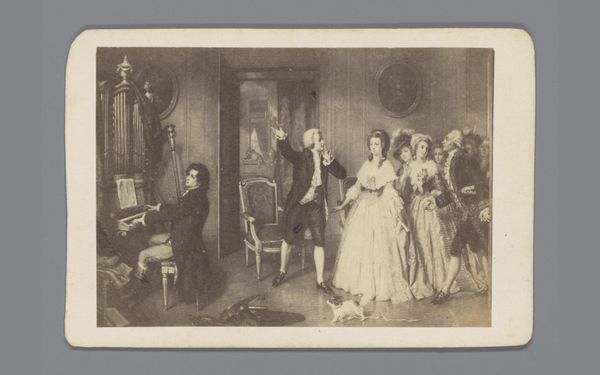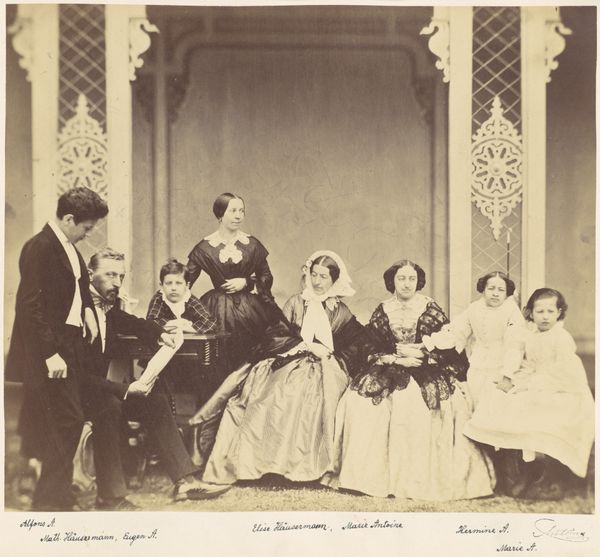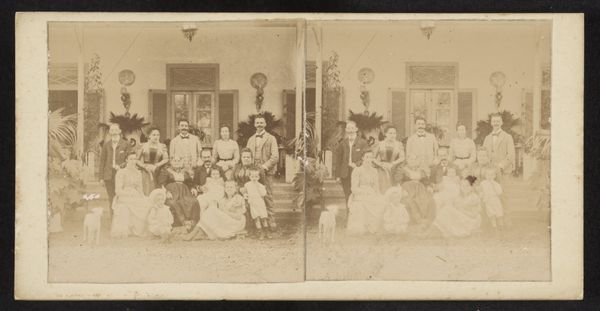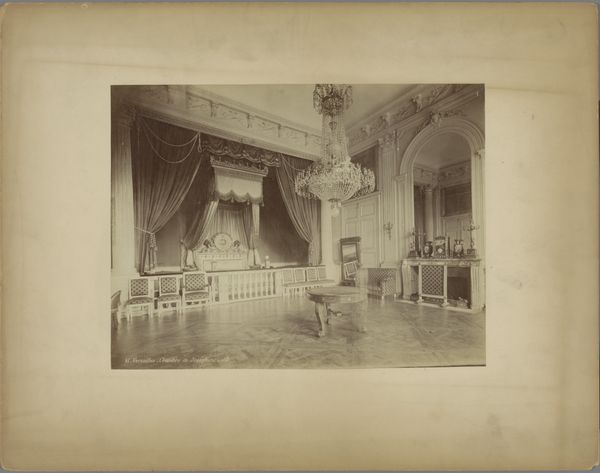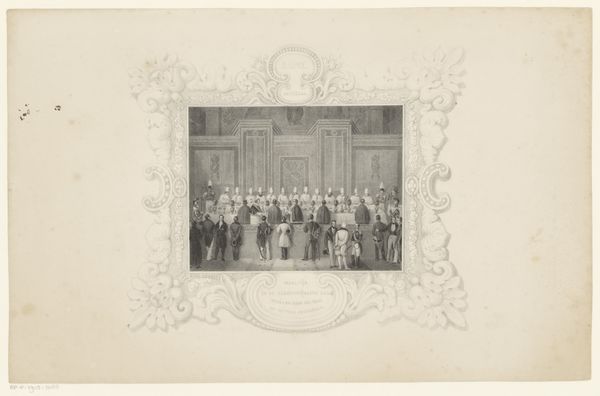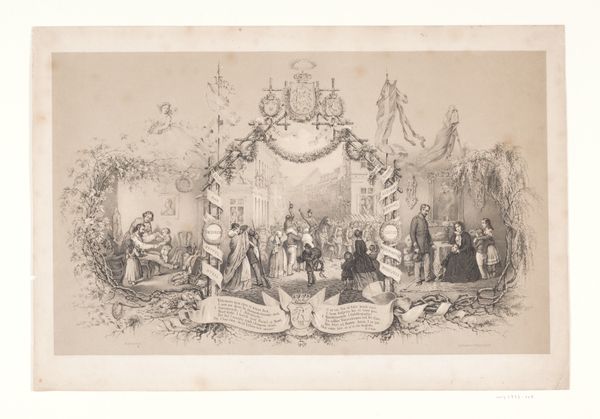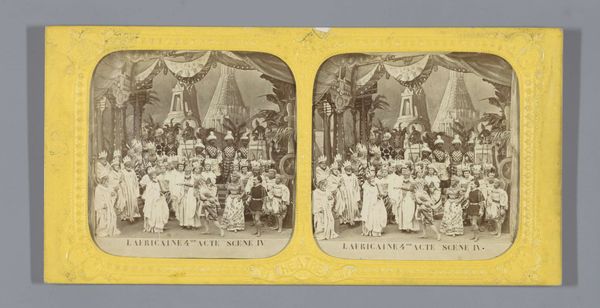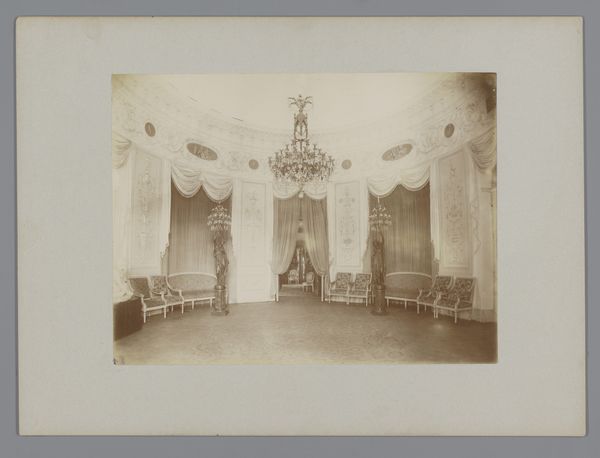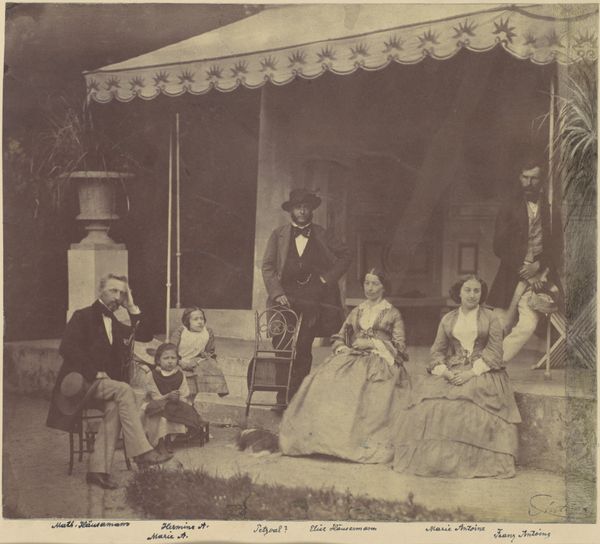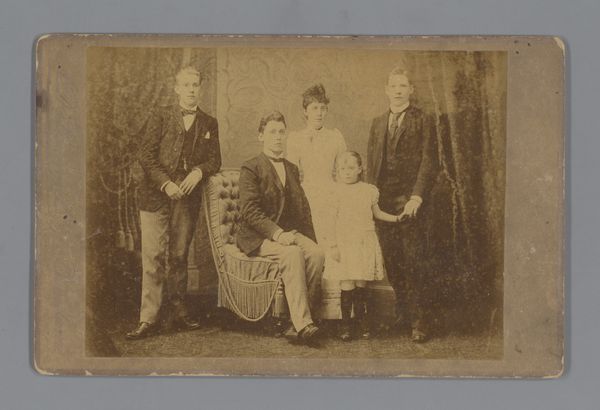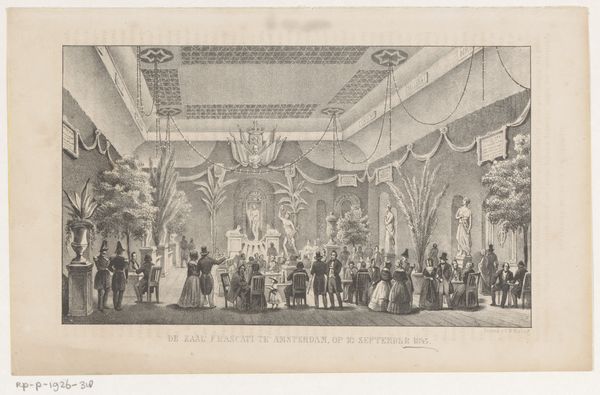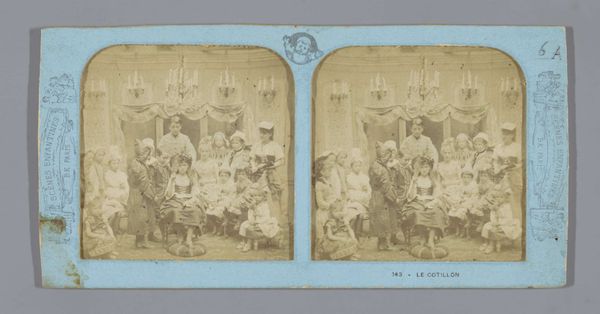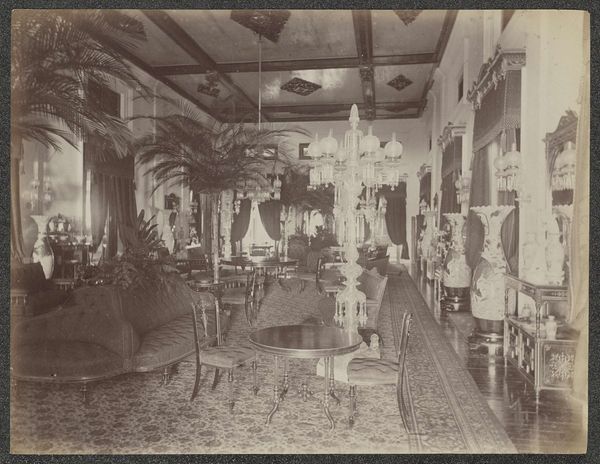
daguerreotype, photography
#
portrait
#
daguerreotype
#
photography
#
genre-painting
Dimensions: height 194 mm, width 276 mm, height 240 mm, width 321 mm
Copyright: Rijks Museum: Open Domain
Curator: What we have here is a fascinating genre-painting photograph by Paul Boyer, entitled "Scène uit het toneelstuk Numa Roumestan van Alphonse Daudet." It likely dates from between 1881 and 1900, captured via the daguerreotype process. Editor: It’s quite striking how posed it feels, despite trying to depict what should be a bustling scene from a play. There’s a sepia wash over everything that adds to this strange stillness. The textures seem somewhat smoothed over by the photographic process, softening details of costume. Curator: Precisely. Notice how Boyer frames the scene – it's clearly theatrical. There’s a kind of stage upon which archetypes interact. We have a range of dress and postures reflecting status; observe how these costumes trigger associations within the viewer about particular roles, desires, and pretensions from that epoch. Editor: The artifice is definitely at play. One wonders about the photographic labour here: The preparation involved – setting the stage, the clothes… did each figure get paid a fair wage, one that accounted for skill and time, or were the actors and set dressing sourced through less than perfect means? Curator: That is certainly a critical dimension. The photograph’s durability through history transforms a scene into cultural document of its social context, a time capsule preserving fleeting details and lasting biases in clothing. Class, gender, leisure–a set of conventions on display for modern audiences to dissect and reclaim meanings from, against our present contexts and needs. Editor: The surface itself offers such insights, you know. The specific chemistry involved in daguerreotypes, the skill and precision to coax detail from metallic surfaces. Each crease, each discolouration in the final print holds clues. Its longevity demonstrates the durability inherent in those processes, despite its fragility, the silver holding up. Curator: And the visual grammar deployed! Consider the mirroring in their outfits and placements that imply the nuances of human interaction captured, frozen, in light-sensitive material! It allows the audience to project psychological states into each of these anonymous figures! The play of desire is preserved, a window of a cultural mirror into other times. Editor: When you describe "light-sensitive"…it brings up not only the processes that shaped it, but about its decay: time, and physical storage also affect light, how we preserve light-sensitive things… Curator: Yes, precisely! I love this idea of light interacting not only with the chemical process of creating the image but with the passage of time eroding it—making photography itself a temporal medium and a site for reflection and analysis. Editor: The dance of visibility. A great ending insight to linger on as we explore more.
Comments
No comments
Be the first to comment and join the conversation on the ultimate creative platform.
